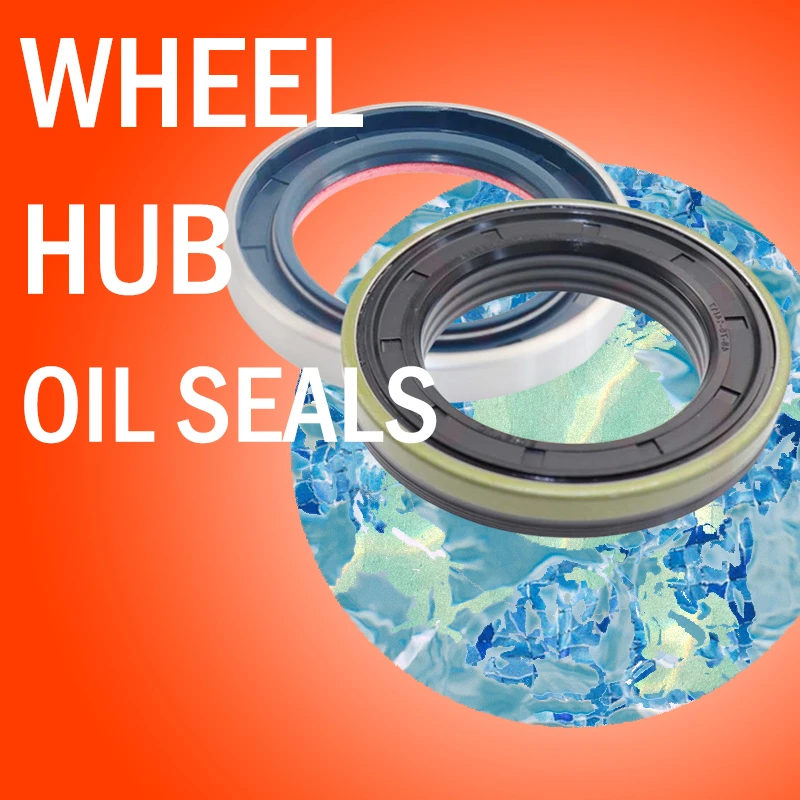Dec . 01, 2024 22:27 Back to list
Understanding Wheel Hub Oil Seals and Their Importance in Vehicle Maintenance
Understanding Wheel Hub Oil Seals Importance and Maintenance
Wheel hub oil seals are crucial components of automotive engineering, often overlooked but vital for the longevity and efficiency of a vehicle’s wheel assembly. These seals play a significant role in ensuring that the lubricating oil within the hub remains contained, preventing contamination from external elements and protecting components from wear.
What is a Wheel Hub Oil Seal?
A wheel hub oil seal is a type of mechanical seal installed in the wheel hub assembly of vehicles. It serves to retain the lubricating oil within the hub while preventing dirt, water, and other contaminants from entering. Typically made of rubber or a combination of rubber and metal, these seals are designed to withstand the harsh conditions found in automotive environments, including varying temperatures and mechanical stress.
Importance of Wheel Hub Oil Seals
1. Lubrication Retention The primary function of a wheel hub oil seal is to retain the lubricant necessary for the smooth functioning of the wheel bearings. Having adequate lubrication reduces friction and ensures that the bearings operate efficiently, which in turn prolongs their lifespan.
2. Contamination Prevention Wheel hubs are exposed to various environmental factors, including dirt, grit, moisture, and salt (especially in winter conditions). The oil seal prevents these contaminants from entering the hub assembly, which could otherwise lead to premature wear of the bearings and other internal components.
3. Heat Resistance The friction generated by moving wheels can produce significant heat. Oil seals are designed to endure high temperatures without degrading, thus maintaining their functionality and integrity over time.
4. Maintenance of Pressure In certain vehicles, especially those designed for high performance, maintaining a specific pressure within the wheel assembly is critical for optimized performance. Oil seals help maintain this pressure, ensuring that the lubricating oil remains in a suitable state to mitigate wear.
Signs of a Failing Wheel Hub Oil Seal
Recognizing the symptoms of a failing wheel hub oil seal is crucial for any vehicle owner
. Common indicators include- Oil Leaks A noticeable oil leak around the wheel hub or brakes is one of the most apparent signs. If you find oil puddles or stains beneath your vehicle, it’s essential to have the seals inspected.
wheel hub oil seal

- Humming or Grinding Noises Unusual noises coming from the wheel area could indicate that the wheel bearings are not adequately lubricated due to a failing oil seal. Grinding or humming sounds often signal that the bearings may be wearing out.
- Excessive Heat If you notice that the wheels or brakes are getting excessively hot, it may be a sign that the oil seal is compromised, and the bearings are not receiving enough lubrication.
Maintenance and Replacement
Regular maintenance checks are essential to ensure the longevity of wheel hub oil seals. During routine maintenance, a technician should inspect for signs of wear or damage, as well as check the condition of the lubricant within the hub.
If a wheel hub oil seal is found to be damaged or worn out, it is crucial to replace it promptly. The replacement process typically involves
1. Removing the Wheel Start by jacking up the vehicle and safely securing it. Remove the wheel to access the hub assembly.
2. Disassembling the Hub Depending on the vehicle, you may need to disassemble the hub to access the oil seal. This might involve removing calipers, rotors, and other components.
3. Replacing the Seal Carefully remove the old seal without damaging other parts of the hub. Clean the area thoroughly before installing the new seal to ensure a proper fit.
4. Reassembling and Testing Once the new seal is in place, reassemble the hub and install the wheel. It’s prudent to test the vehicle to confirm that the oil seal is functioning correctly.
Conclusion
Wheel hub oil seals are small but mighty components that significantly impact vehicle performance and safety. Regular maintenance and timely replacement can lead to smoother rides and extended lifespan of wheel bearings. By understanding their importance and recognizing the signs of failure, vehicle owners can ensure that their automobiles remain in optimal condition. Taking proactive steps in maintaining these seals not only enhances performance but also contributes to overall vehicle reliability.
-
TCN Oil Seal Metal Ring Reinforcement for Heavy Machinery
NewsJul.25,2025
-
Rotary Lip Seal Spring-Loaded Design for High-Speed Applications
NewsJul.25,2025
-
Hydraulic Cylinder Seals Polyurethane Material for High-Impact Jobs
NewsJul.25,2025
-
High Pressure Oil Seal Polyurethane Coating Wear Resistance
NewsJul.25,2025
-
Dust Proof Seal Double Lip Design for Construction Equipment
NewsJul.25,2025
-
Hub Seal Polyurethane Wear Resistance in Agricultural Vehicles
NewsJul.25,2025
-
The Trans-formative Journey of Wheel Hub Oil Seals
NewsJun.06,2025
Products categories
















